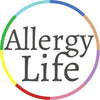Hypersensitivity type may be- Type I Allergy
Immune reactions may be from- IgE
Reactions may occur in- Minutes
A Dairy Allergy is an immune response from consuming or inhaling substances containing the proteins found in Milk (Cow's Milk and to other animal milk). This allergy is also referred to as a Dairy Allergy or Cow's Milk Allergy.
In Australia around 2% (1 in 50) of babies are allergic to Cow's milk. Recent reports have shown that around 80% of children outgrow their Cow’s milk allergy between the ages of three to five years.
Not all allergic reactions from Milk (Dairy) are considered a Milk (Dairy) Allergy. When people have reactions from milk that are not from the protein found in milk, this can be due them having a-
- Lactose Intolerance: This is caused by the lack of the enzyme lactase in the body, which helps to digest the milk sugar called lactose. For more information on Lactose Intolerance click here.
- Milk Mucus Cough: This sensitisation to milk is described by some people as a feeling of a coating of the throat and a thicker mucus that is harder to swallow. Research has shown that this sensitisation also occurs with other liquids that are the same thickness and do not cause an increased production of mucus.
While not an allergic reaction, both a Lactose Intolerance and a Milk Mucus Cough, may bring severity of symptoms that impact a person based on their individual circumstances. It's important to have these determined by a qualified health care provider, especially in the case of receiving the correct treatments for the medically diagnosed reaction.
Milk is one of the 10 most common food allergens in Australia, that all together account for 90% of food allergies in Australia.

SYMPTOMS
Some of the symptoms may be characterised by:
- Stomach pain
- Nausea
- Skin Rash
- Itching, Tingling or Swelling of the Lips, Tongue or Throat
- Trouble Breathing
- Watery Eyes
- Runny Nose
- Hives
- Wheezing
- Coughing
- Vomiting
- Diarrhoea
- Abdominal Cramps
- Colic, in Babies
- Asthma aggravation
- ANAPHYLAXIS
The validity and severity of these symptoms are dependent on the individual and the level of exposure, as determined by a qualified health care provider.
TREATMENT
If you experience or are in the presence of someone who encounters a serious reaction (this may include difficulty breathing, wheezing, throat tightening, swelling, collapse, etc), follow their action plan or emergency instructions and call or have someone call Triple Zero (000) immediately.
Adrenaline (Epinephrine) is the first-line treatment for Anaphylaxis. After administering Adrenaline (Epinephrine), seek emergency medical attention by calling Triple Zero (000) for an ambulance.
If you are unsure what to do, call Triple Zero (000).
If you or someone you know is suspected of having an allergy, it’s important to discuss diagnosis, symptoms and treatment with a qualified health care provider to understand how to manage individual allergies and also to set up an Allergy Action Plan in the case of a reaction.
Always present your Allergy Card, Medical Alert Bracelet, Action Plan or Necklace to ensure health care providers, family members, friends, colleagues and others are aware of your Allergies.
TESTING
A Skin Prick Test, Blood Test and/ or Oral Food Challenge may be used to test for a Milk (Dairy) Allergy.
LABELLING
Some labels or terms you may come across on Milk (Dairy) Allergy friendly products:
"Dairy Free" "Dairy Alternative" "Milk Free"

RANDOM FACT
A type of plastic that is odourless, antistatic, biodegradable, insoluble in water and virtually nonflammable can be created using Milk.
WHERE YOU MAY COME ACROSS MILK (DIARY)
The below is not a complete list, but just some of the places, you may come across Milk (Dairy):
- Butter
- Yoghurt
- Cheese
- Ice Cream
- Ghee
- Milk
- Condensed milk
- Kaymak
- Crème fraîche
- Curd
- Cream (Sour cream, Cream cheese, etc)
- Skyr
- Buttermilk
- Cottage cheese
- Mailai
- Dips
- Salad dressings
- Kefir
- Nougat
- Sherbet
- Deli meat
- Hot dogs
- Sausage
- Paté
- Tuna fish
- Shellfish
- Steak
- Instant mashed potatoes
- Some medication
- Chewing gum
The information provided on Allergy Life Australia is to generally educate and inform you about living with allergies, intolerances and conditions, and is not intended as medical instruction or as a substitute for diagnosis, examination and advice by a qualified health care provider.




